All issues

Volume 21, Issue 9
Displaying 1-6 of 6 articles from this issue
- |<
- <
- 1
- >
- >|
-
G. Tanaka, S. Shindo, M. Toda1952Volume 21Issue 9 Pages 236-246
Published: 1952
Released on J-STAGE: June 12, 2009
JOURNAL FREE ACCESSAfter the War a pretty number of welded bridge were built and still many plans are afoot to erect welded bridges in Japan.
This trend originated from recognition of the fact that through the development of the design and construction method, welded bridges are in certain cases more economical and reliable than riveted ones.
The present report touches upon the manufacture and erection of Hou Kyu Bashi bridge which was completed in March, 1952. It is all-weld highway bridge built on the order placed by the Minstry of Construction, Japanese Government and the work was done under contract by Yokogawa Bridge Works. LTD.
The principal design features are: design load, Ist class; type Garber type plate girder; span arrangement, 19.3m-24.6m-24.5m 24.6m-24.6m-19.3m ; effective width, 9.0m; main girders, 4 files ; total length, 13.2.8m; effective area, 1016m2; steel weight, 182, 1 t ; and unit weight of steel, 179 kg/m2.
Joints between main girders or main girders and floor beams were butt-welded without splice plate, Special features of manufacture and erection are as follows:
1) all shop-and field-butt joints were baclk-chipped by pneumatic chisel or gas gouging method;
2) all reinforcements of butt welds were chipped off and finished by the grinder and
3) total length of the shop welded butt joints was jnspected by the radiograph.View full abstractDownload PDF (2632K) -
Weldability of 13-Cr stainless steel platesS. Ando1952Volume 21Issue 9 Pages 247-254
Published: 1952
Released on J-STAGE: December 10, 2009
JOURNAL FREE ACCESSWeldability tests have been made of 7 different kinds of stainles steel electrodes (mostly, 3.2mm dia.) on 5 kinds of 13-Cr steel plates (mostly, 2.3mm thick) having C content ranging 0.07-0.23.
The following results were obtained :
1) In longitudinal bead bending test there occurred no case of 180° bending angle without crack development in the heat-affected zone, independently of C content of steel plate and electrode type. The bending angles for ones of 0.07%C content are relatively high and stable.
2) As to the hardness of weld metal zone, a wide variance is observed, depending on electrode types. In austenite types which produced excellent elongation values of all deposit metals, conside-rable martensite transformation was seen in weld meta zone, making it unadvisable to use such electrodes as appreciably increase hardness.
3) In the case of 0.23%C content, cracks appeared in the heat-affected zone even under non-con-straint conditions. With 0.16%C content some developed longitudinal cracks in the heat-affected zone under constraint test, while below 0.11%C content no cracks occurred.
Exceptions are fusion zone cracks being observed sometimes when steel plates with 0.09% C content are welded with Mn-Cr electrode.
4) These facts can be roughly explained by the relations between C content of steel plates and martensite transformation in the heat-affected zone of base metal and by dilution of weld metal with steel plate.View full abstractDownload PDF (640K) -
[in Japanese]1952Volume 21Issue 9 Pages 254-258
Published: 1952
Released on J-STAGE: June 12, 2009
JOURNAL FREE ACCESSDownload PDF (462K) -
W.R. Wentworth1952Volume 21Issue 9 Pages 258-261
Published: 1952
Released on J-STAGE: June 12, 2009
JOURNAL FREE ACCESSDownload PDF (334K) -
[in Japanese]1952Volume 21Issue 9 Pages 261-265
Published: 1952
Released on J-STAGE: December 10, 2009
JOURNAL FREE ACCESSDownload PDF (466K) -
1952Volume 21Issue 9 Pages 267-268
Published: 1952
Released on J-STAGE: June 12, 2009
JOURNAL FREE ACCESSDownload PDF (99K)
- |<
- <
- 1
- >
- >|